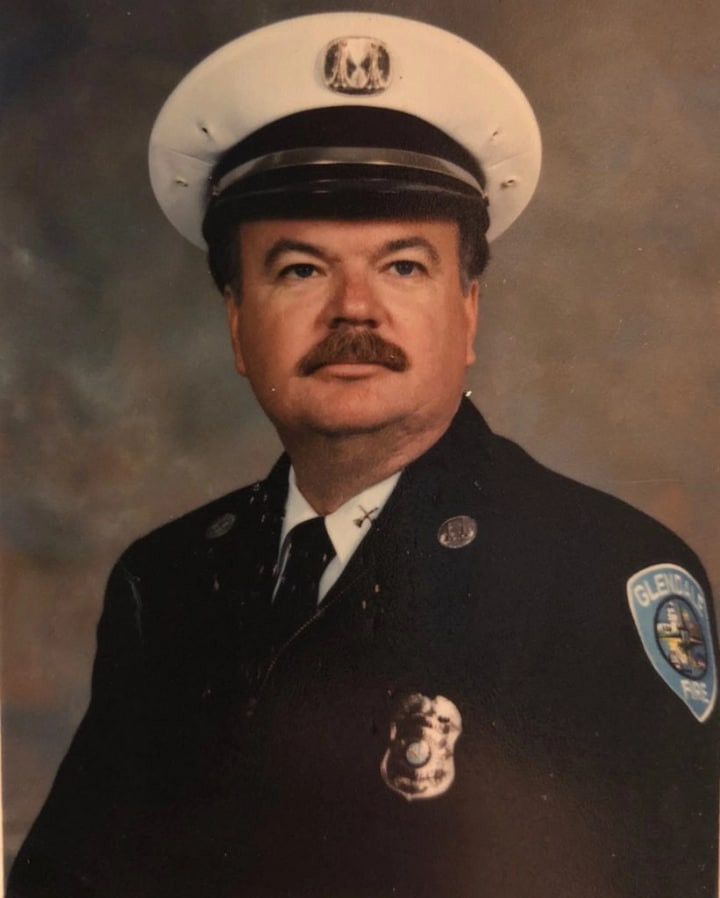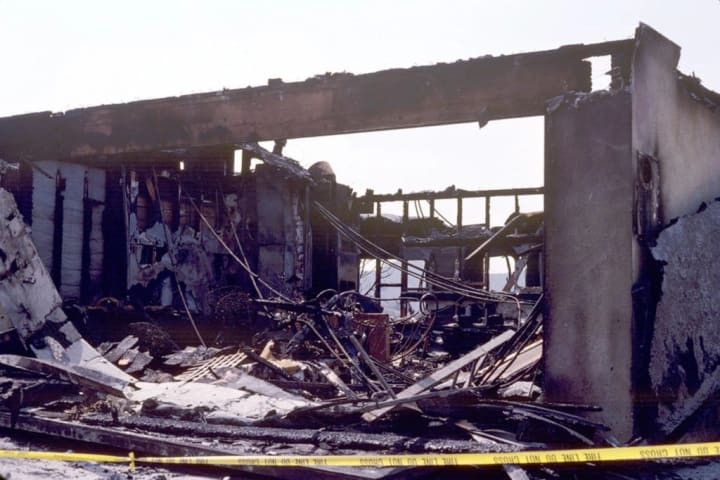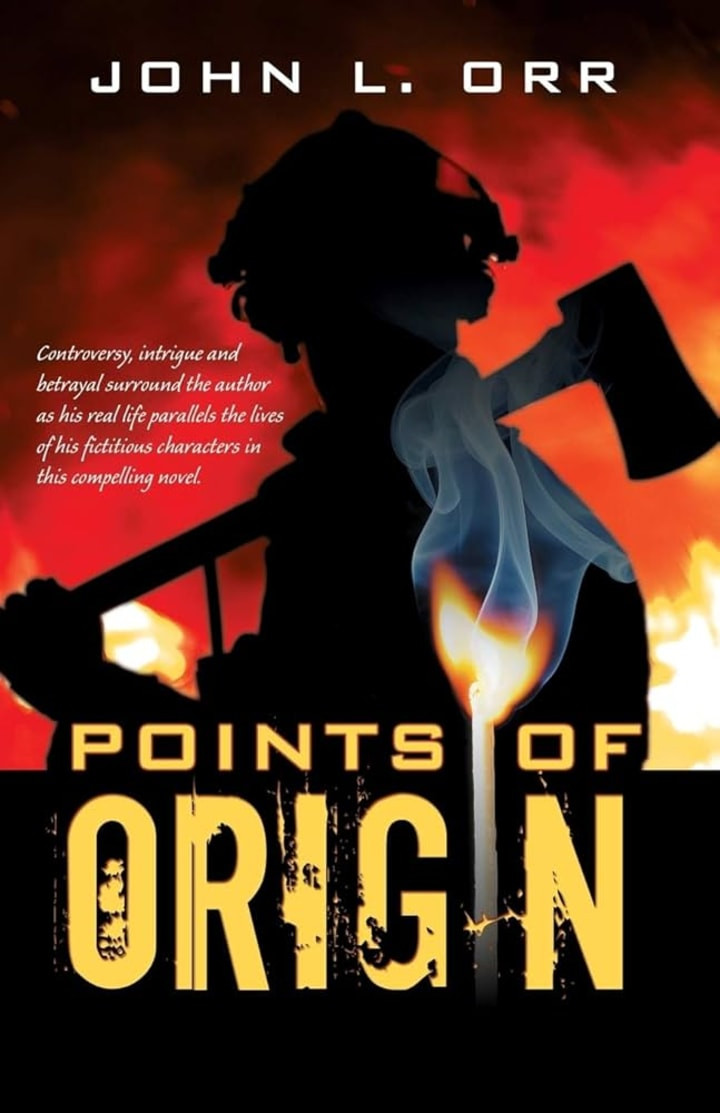The concept of a “Hero Syndrome,” sometimes referred to as a Savior Complex, describes a psychological state where individuals crave recognition for heroic acts. While not formally recognized by the American Psychiatric Association as a distinct condition, the traits associated with Hero Syndrome can manifest in people, particularly those in positions of authority or trust, such as nurses, firefighters, and police officers. In extreme cases, this need for heroism can lead individuals to create dangerous situations so they can step in to “save the day” and be lauded as a hero. One chilling example that may exemplify this complex is the case of John Leonard Orr, a man who embodied the very profession meant to combat fire, yet became consumed by it in the most destructive way imaginable.
The Early Life and Career Path of John L. Orr
Born on April 26, 1949, in Pasadena, California, John L. Orr grew up in a modest family with two brothers. His parents’ divorce during his childhood might have been a formative experience, but from an early age, Orr displayed a peculiar fascination with fire. Following high school, in 1967, he enlisted in the U.S. Air Force. This decision led him to basic training and subsequently to the Air Force firefighting school, marking the commencement of his career in fire service.
After a stint stationed in Spain, where his fire-related experiences remain somewhat vague, John L. Orr was transferred to Montana in 1970. During this time, he married Jody, his high school sweetheart. However, his military service was relatively short-lived, and he received an honorable discharge the following year, returning to Los Angeles. John and Jody welcomed two daughters, Carrie Lyn and Lori, before their eventual divorce. Orr remarried three more times, but his daughters from his first marriage appear to be his only children.
 John Orr in his younger years.
John Orr in his younger years.
Upon his return to California and civilian life, John Orr pursued a career in law enforcement and fire services simultaneously. He applied to both police and fire departments in the Los Angeles area. Interestingly, while he excelled in the standard tests for the police department, he failed the psychological evaluation. A similar pattern emerged with the fire department; he passed the technical and physical aspects but stumbled on the physical fitness test.
Ultimately, in 1974, John Leonard Orr secured a position with the Glendale Fire Department. To supplement his income, he also worked as a clerk at a 7-Eleven and as a security guard at Sears Roebuck. It was during this period that he earned the less-than-flattering nickname “Inspector Clouseau” from his colleagues. This moniker stemmed from his tendency to consistently overstep his authority and boundaries, a trait that would foreshadow his later, far more sinister overreach.
Despite these early setbacks and workplace dynamics, John L. Orr persevered and eventually obtained a gun and carry permit. He transitioned into fire investigation, a role that would solidify his position within the fire service and grant him the rank of captain. This move into investigation placed him in a position of trust and authority, ironically setting the stage for his descent into arson and a double life.
The South Pasadena Hardware Store Fire: A Turning Point
October 10, 1984, marked a grim day in South Pasadena, California, when a devastating fire engulfed a hardware store. The blaze resulted in the complete destruction of the business and, tragically, claimed the lives of four individuals, including a young two-year-old child. Coincidentally, a convention of fire investigators was taking place nearby, leading numerous experts to converge on the scene of the catastrophic fire.
Initially, nearly all investigators at the scene concluded that the fire was accidental, attributing it to an electrical malfunction. However, one dissenting voice challenged this consensus: John Leonard Orr. As one of the investigators present, Orr adamantly asserted that the fire was not accidental but deliberately set – arson. This early insistence on arson, against the prevailing opinion, would later become a chilling foreshadowing of his own involvement in similar incidents.
The Net Closes: Investigating an Arson Investigator
In January 1987, three years after the South Pasadena tragedy, a fire erupted in Fresno, California, again, with unsettling irony, during a convention for arson investigators. This incident was followed by a series of other suspicious fires in the region. Crucially, an unidentified fingerprint was recovered from one of these fire scenes, raising suspicions that the arsonist might be someone within the arson investigation community itself.
Another cluster of fires broke out in 1989, once again during an arson investigator convention. By this point, the pattern was becoming disturbingly clear. Captain Marvin Casey of the Bakersfield Fire Department took a proactive step, comparing attendee lists from the various conventions held around the times of these fires. The result was a damning revelation: John Leonard Orr’s name appeared on the attendance list of every single convention coinciding with the suspicious fires.
The fingerprint recovered earlier, however, had not initially been matched to John L. Orr due to limitations in fingerprint technology at the time. This changed dramatically in 1991. A task force investigator, revisiting the unsolved arson cases and the fingerprint evidence, obtained a copy of the original print collected years prior. Advancements in forensic technology now allowed for a definitive match – the fingerprint belonged to John L. Orr’s left ring finger. The evidence was mounting, and the focus of the investigation turned squarely onto one of their own.
John Orr: A Prolific Arsonist Unmasked
 A somber crime scene believed to be linked to John Orr's arson spree.
A somber crime scene believed to be linked to John Orr's arson spree.
John Leonard Orr is estimated to have ignited a staggering number of fires throughout his career, with some estimates reaching as high as 2000. A selection of fires linked to him includes:
- October 10, 1984 – South Pasadena, California
- January 13, 1987 – Fresno, California
- January 15, 1987 – Fresno, California
- January 16, 1987 – Tulare, California
- January 16, 1987 – Bakersfield, California
- January 30, 1987 – Fresno, California
- March 3, 1989 – Morro Bay, California
These are just a few examples from a much larger, devastating pattern. Investigators, recognizing the overwhelming evidence and the pattern of Orr’s presence at fire scenes, began to closely monitor his activities. The surveillance culminated in his arrest on December 4, 1991.
Points of Origin: The Book That Mirrored Reality
 The cover of "Points of Origin," John Orr's fictional book that eerily mirrored his crimes.
The cover of "Points of Origin," John Orr's fictional book that eerily mirrored his crimes.
As the investigation into the extensive series of fires progressed, detectives uncovered a particularly disturbing piece of evidence linked to John Orr: a manuscript for a book titled “Points of Origin.” This fictional work, penned by Orr himself, told the story of a firefighter named Aaron Stiles who was, chillingly, a serial arsonist. The investigators were struck by the uncanny similarities between the fires described in Orr’s manuscript and the real-world fires he had investigated – and was now suspected of starting.
In his defense, John L. Orr maintained that “Points of Origin” was purely a work of fiction. He claimed, “The character of Aaron Stiles was a composite of arsonists I arrested.” However, this explanation failed to convince the jury. In July 1992, he was convicted on three counts of arson and sentenced to 30 years in prison.
But this was not the end of John Orr’s legal battles. Two years later, he faced a far more serious trial, charged with four counts of first-degree murder with special circumstances and 21 counts of arson. Mike Cabral, the lead prosecutor, initially sought the death penalty. However, an off-the-record plea deal was offered: confess to the crimes, and the death penalty would be removed from consideration. Remarkably, John Orr rejected this deal.
 John L. Orr during his trial.
John L. Orr during his trial.
On June 25, 1998, John Leonard Orr was convicted on all four counts of murder and all but one of the arson charges. The jury’s deliberation on the death penalty resulted in an 8-4 split in favor. While a majority, it wasn’t the supermajority possibly required for a death sentence under California law. Adding to the emotional weight of the trial, Orr’s daughter, Lori, testified on his behalf, pleading that her father not receive the death sentence.
Ultimately, John L. Orr was sentenced to four concurrent life sentences, plus an additional 21 years for the arson charges. These sentences were structured to run consecutively with his earlier 30-year arson sentence. A later California appeals court decision vacated nine years from the 21-year arson sentence, citing unintentional damages in some of the fires. Despite this minor reduction, John Leonard Orr’s fate is sealed. Barring an unlikely successful appeal or early release, he is destined to spend the rest of his life in prison.
Pyromania, Pyrophilia, and the Psychology of an Arsonist
The motivations behind John Orr’s actions remain a subject of intense speculation. A prevailing theory suggests a psychological disorder, specifically either pyromania or pyrophilia. Both conditions are related to fire, but distinct in their underlying drivers.
Pyromania
Pyromania is classified as an impulse control disorder characterized by a persistent and compulsive urge to deliberately set fires. Common motivations associated with pyromania include:
- Fascination with fire itself
- Seeking stress relief through fire-setting
- Experiencing pleasure or gratification from fire and its aftermath
The notion that setting fires could serve as a stress reliever might seem perplexing, but it underscores the complex and sometimes counterintuitive nature of psychological disorders.
Pyrophilia
Pyrophilia shares similarities with pyromania, but the key differentiator lies in the motivation. Pyrophilia is an exceptionally rare paraphilia where individuals derive sexual arousal from fire and fire-starting. The pleasure experienced is explicitly sexual in nature, making fire and arson a source of sexual gratification.
It remains unclear whether John Leonard Orr was ever formally diagnosed with either pyromania or pyrophilia. Regardless of the specific diagnosis, the psychological dimension of his arson spree is undeniable. The “Hero Syndrome” theory, combined with the potential for pyromaniac or pyrophiliac tendencies, offers a framework for understanding the deeply disturbed motivations behind his actions.
The Final Chapter for John Leonard Orr
John Leonard Orr’s future is unequivocally confined to prison. Even in the improbable scenario of a retrial and acquittal, his life outside prison walls would be irrevocably shattered. In his seventies and branded as one of the most infamous arsonists in recent history, he has lost virtually everything. His wife reportedly divorced him soon after his sentencing, and his daughters have severed all ties.
With no home, no family, and no prospects of employment, John L. Orr is trapped in a situation of his own making. His imprisonment is likely to be a permanent state, a fitting, albeit tragic, end to a life consumed by fire, deception, and destruction.

